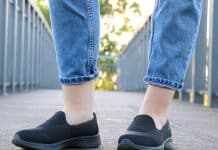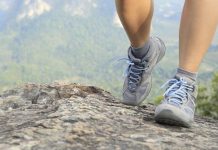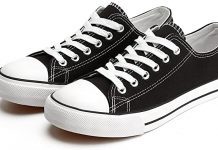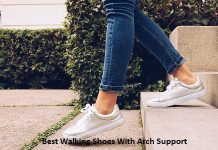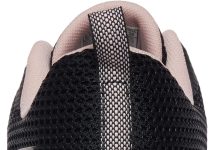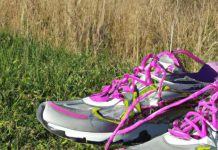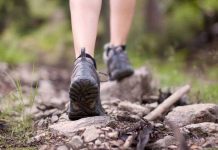Walking barefoot in the comfort of our own homes has always been a delightful and liberating experience. It makes us feel grounded, connecting us with the earth beneath our feet. But have you ever wondered if this simple act of going shoeless benefits our feet? The following article will explore the advantages and disadvantages of walking barefoot indoors and whether it genuinely promotes overall foot health and well-being. So, kick off your shoes and join us as we unravel the mystery of walking barefoot in the house!
The Benefits of Walking Barefoot
Strengthening Foot Muscles
Walking barefoot can be an excellent way to strengthen the muscles in our feet. When we walk without shoes, the muscles in our feet are forced to work harder to support our body weight and provide stability. This can lead to stronger foot muscles essential for overall foot health. Strong foot muscles can prevent issues such as fallen arches and improve our ability to perform activities that rely on foot strength, such as running or jumping.
Improving Balance and Coordination
Walking barefoot also has the advantage of improving our balance and coordination. When we walk without shoes, our feet are in direct contact with the ground, allowing us to feel its texture better and make the necessary adjustments to maintain our balance. This increased sensory feedback helps train our proprioceptive system, responsible for our sense of body position and movement. Regular barefoot walking can enhance our proprioception and develop better balance and coordination skills.
Promoting Better Foot Mechanics
By walking barefoot, we encourage more natural and efficient foot mechanics. When we wear shoes, especially those with rigid soles or elevated heels, our feet are restricted in their movement and cannot function optimally. On the other hand, walking barefoot allows our feet to flex and move naturally, which can help strengthen the arches, improve gait, and prevent foot problems such as plantar fasciitis or bunions.
Increasing Sensory Feedback
Walking barefoot provides us with a heightened sensory experience. Our feet have thousands of nerve endings that allow us to feel and interpret the ground beneath us. Walking without shoes, we can fully engage with our environment and receive valuable sensory feedback, such as temperature, texture, and pressure. This increased sensory input enhances our walking experience and improves our overall body awareness.
Reducing Foot Pain
Contrary to common belief, walking barefoot can help reduce foot pain. It can alleviate the discomfort caused by conditions such as plantar fasciitis or Morton’s neuroma. Walking without shoes allows our feet to move and function naturally, relieving pressure on specific areas and promoting proper alignment. Additionally, the strengthened foot muscles and improved foot mechanics achieved through barefoot walking can decrease the likelihood of developing chronic foot pain.
The Potential Risks of Walking Barefoot
Increased Risk of Injuries
While walking barefoot can have numerous benefits, it is essential to know the potential risks. One of the main risks is an increased chance of foot injuries. Without the protection of shoes, our feet are more susceptible to cuts, bruises, and puncture wounds from sharp objects or uneven surfaces. Additionally, walking barefoot can increase the risk of sprained ankles, especially if we encounter unexpected obstacles or lose balance.
Exposure to Bacteria and Fungi
Walking barefoot, especially in public places such as gyms or swimming pools, exposes our feet to various bacteria and fungi. These microorganisms can cause infections such as athlete’s foot or toenail fungus. It is crucial to maintain good hygiene practices, such as washing our feet thoroughly and drying them well, to reduce the risk of contracting these infections.
Impact of Hard Surfaces
Walking barefoot on hard surfaces, such as concrete or asphalt, can be harsh. Shoes’ lack of cushioning and shock absorption can lead to increased pressure on the soles and heels, resulting in discomfort and potential foot pain. It is essential to vary the surfaces we walk on and ensure our feet have adequate rest and recovery time.
Lack of Support and Cushioning
Another potential risk of walking barefoot is the lack of support and cushioning. Shoes are designed to provide arch support, heel cushioning, and overall foot stability. Walking barefoot for prolonged periods or on hard surfaces can lead to the overuse of specific foot structures, which may result in conditions such as plantar fasciitis or Achilles tendonitis. It is essential to balance walking barefoot and wearing supportive footwear to maintain optimal foot health.
When Walking Barefoot is Good
Walking on Soft Surfaces
Walking barefoot is particularly beneficial on soft surfaces such as grass, sand, or carpet. These surfaces offer natural cushioning and support, reducing the strain on our feet while providing an opportunity to strengthen the foot muscles. Walking on soft surfaces also minimizes the risk of injuries and allows our feet to receive the sensory feedback they need to maintain balance and coordination.
Short Walking Periods
For those new to walking barefoot or with sensitive feet, it is advisable to start with short walking periods. Gradually increasing the duration allows our feet to adapt and strengthen without overwhelming them. Short walks can also serve as foot exercise and relaxation, providing a break from the constraints of shoes and allowing our feet to breathe and rejuvenate.
Maintaining Good Foot Hygiene
Walking barefoot can be beneficial if we maintain good foot hygiene practices. This includes regularly washing our feet with soap and water, drying them thoroughly (especially between the toes), and applying a moisturizer to prevent dryness and cracking. Keeping our toenails trimmed and clean can also help reduce the risk of ingrown toenails and other foot problems.
When Walking Barefoot may not be recommended
Walking on Hard or Rough Surfaces
Walking barefoot on hard or rough surfaces, such as concrete or gravel, can harm our feet. The lack of cushioning and protection increases the risk of injuries and discomfort. It is advisable to wear appropriate footwear when walking on these types of surfaces to minimize the impact on our feet.
Foot Problems and Conditions
Individuals with specific foot problems or conditions may need to avoid walking barefoot. Conditions like diabetic neuropathy, peripheral artery disease, or foot deformities can increase the risk of foot injuries or complications. It is essential to consult a healthcare professional or podiatrist to determine the most suitable footwear options for these conditions.
Colder Environments
Walking barefoot in colder environments can be risky, as the lack of insulation can lead to frostbite or hypothermia. It is crucial to wear appropriate footwear to keep our feet warm and protected when walking in cold weather. Insulated shoes or boots can provide insulation and prevent temperature-related foot issues.
Steps to Safely Walk Barefoot
Strengthening Feet and Ankles
Before starting barefoot walking, it is beneficial to strengthen the muscles in our feet and ankles. Simple exercises such as toe curls, heel raises, or picking up small objects with our toes can help improve foot strength and flexibility. Additionally, incorporating ankle-strengthening exercises, such as balancing on one foot or using resistance bands, can enhance the stability and support of our lower limbs.
Inspecting the Environment
Before walking barefoot, inspecting the environment and removing any potential hazards is essential. This includes checking for sharp objects, glass, or debris that could pose a risk of injury. By ensuring the cleanliness and safety of the walking area, we can minimize the chances of stepping on something that could harm our feet.
Practicing Good Foot Hygiene
As mentioned earlier, maintaining good foot hygiene is crucial when walking barefoot. Regularly washing our feet, thoroughly drying them, and applying moisturizer helps keep the skin healthy and minimizes the risk of infections. Wearing clean socks and changing them regularly also contributes to maintaining good foot hygiene.
Gradually Increasing Walking Time
Suppose we are new to barefoot walking or have been wearing shoes for extended periods. In that case, it is essential to start slowly and gradually increase the amount of time spent walking barefoot. This allows our feet to adjust and adapt to the new demands, preventing overuse injuries or excessive discomfort. Listening to our bodies and taking breaks as needed is crucial for a safe and enjoyable barefoot walking experience.
Conclusion
Walking barefoot can offer numerous benefits for our feet, from strengthening foot muscles and improving balance to promoting better foot mechanics and increasing sensory feedback. However, it is crucial to be aware of the potential risks, such as increased injury risk or exposure to bacteria and fungi.
By considering the environmental conditions, our foot health, and practicing good foot hygiene, we can safely enjoy the benefits of walking barefoot. It is essential to strike a balance between walking barefoot and wearing appropriate footwear, considering the surface we are walking on and the specific needs of our feet.
Whether we walk barefoot on soft surfaces or incorporate it as a part of our foot care routine, being mindful and proactive about our foot health will allow us to make the most of this simple yet beneficial practice.


